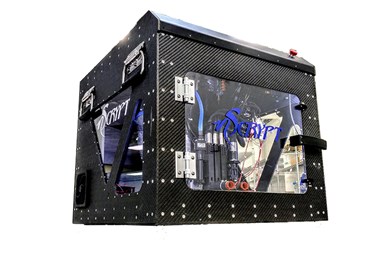nRugged 3D Printer Designed for Use in Harsh Environments
Printer offers more than 10,000 material choices and is factory configured for either 3D manufacturing or bioprinting with automatic tool changes.
Share
Read Next

nRugged 3D manufacturing system/biomanufacturing platform
The nScrypt nRugged 3D manufacturing system/biomanufacturing platform is designed for use in harsh environments. It is a more robust version of nScrypt’s direct digital manufacturing platform (also known as Factory in a Tool (FiT)) and is factory configured for either 3D manufacturing or bioprinting with automatic tool changes. For example, a complete electronic device or a bioactive bandage can be digitally manufactured in the same machine.
The bioprinter configuration can print both biologics and non-biologics with a broad palette of materials, the company says. The machine solves the problem of manufacturing a precision product, not just a part, in harsh environments, such as on a Navy ship in rough waters or on the back of a trailer.
The system can be outfitted with up to four tool heads, in any combination, for microdispensing, material extrusion, aerosol jetting, milling and polishing, and pick-and-place, using more than 10,000 material choices. The standard machine sports a carbon fiber exoskeleton and 150 × 150 mm heated print bed, with 238 × 173 × 152 mm travels.
The machine has been used by the U.S. military in a forward-deployed desert environment and a rugged version of nScrypt’s bioprinter was launched to the International Space Station in July 2019, for bioprinting human heart tissue in microgravity.
Related Content
-
3D Printed Spine Implants Made From PEEK Now in Production
Medical device manufacturer Curiteva is producing two families of spinal implants using a proprietary process for 3D printing porous polyether ether ketone (PEEK).
-
ActivArmor Casts and Splints Are Shifting to Point-of-Care 3D Printing
ActivArmor offers individualized, 3D printed casts and splints for various diagnoses. The company is in the process of shifting to point-of-care printing and aims to promote positive healing outcomes and improved hygienics with customized support devices.
-
What Does Additive Manufacturing Readiness Look Like?
The promise of distributed manufacturing is alluring, but to get there AM first needs to master scale production. GKN Additive’s Michigan facility illustrates what the journey might look like.










